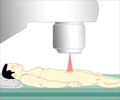Study finds prostate cancer patients of low socioeconomic status are more likely to die than patients with higher incomes.
A new study from Swiss researchers to be published in the December 1, 2009 issue of Cancer, a peer-reviewed journal of the American Cancer Society has revealed that prostate cancer patients of low socioeconomic status are more likely to die than patients with higher incomes.
The study's findings indicate that poor prostate cancer patients receive worse care than their wealthier counterparts.Many of the previous studies on socioeconomic status (SES) and prostate cancer mortality are from North America, particularly from the United States. Researchers wanted to know how disparities affected prostate cancer mortality in Switzerland, a country with an extremely well developed health care system and where healthcare costs, medical coverage, and life expectancy are among the highest in the world, Elisabetta Rapiti, M.D., MPH, of the University of Geneva and her colleagues conducted a population-based study that included all residents of the region who were diagnosed with invasive prostate cancer between 1995 and 2005.
The analysis included 2,738 patients identified through the Geneva Cancer Registry. A patient with prostate cancer was classified as having high, medium, or low socioeconomic status on the basis of his occupation at the time of diagnosis. The investigators compared patient and tumor characteristics, as well as treatments among the different socioeconomic groups.
Compared with patients of high socioeconomic status, those of low socioeconomic status were less likely to have their cancer detected by screening, had more advanced stages of cancer at diagnosis, and underwent fewer tests to characterize their cancer. These patients were less likely to have their prostates removed and were more likely to be managed with watchful waiting, or careful monitoring.
Patients with low socioeconomic status also had a 2-fold increased risk of dying from prostate cancer compared with patients of high socioeconomic status. "The increased mortality risk of patients of low socioeconomic status is almost completely explained by delayed diagnosis, poor work-up, and less complete treatment, indicating inequitable use of the health care system," said Rapiti. The authors say lead time and length time biases linked to early detection through PSA screening may partially explain the survival advantage observed among high SES patients. However, they found that the differences by SES in prostate cancer mortality were limited to patients with advanced disease, for whom the impact of such biases is not as strong, and that treatment choice probably played a more important role. The authors say reducing health inequalities linked to socioeconomic status should receive high priority in public health policies, and that improving patients' access to prevention and early diagnostic tests and ensuring that they receive standard treatments could help reduce the socioeconomic differences seen in this study.
Advertisement
RAS








![Prostate Specific Antigen [PSA] Prostate Specific Antigen [PSA]](https://www.medindia.net/images/common/patientinfo/120_100/prostate-specific-antigen.jpg)






